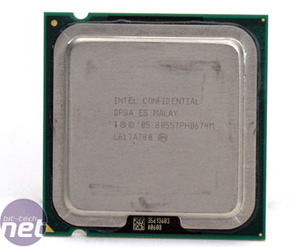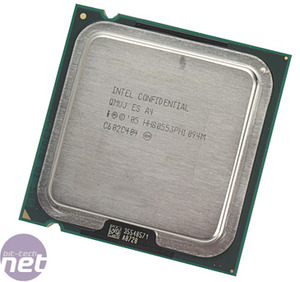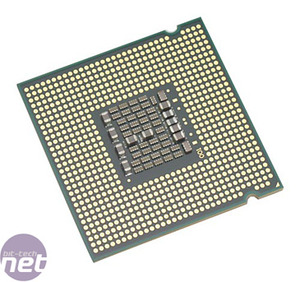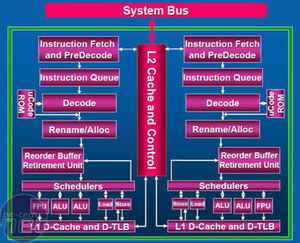
Contrasting Architectures:
To help explain how all of the elements of the Core microarchitecture fit together, it's probably easiest to show a block diagram of the Core and NetBurst dual core architectures side by side. The most notable difference between the two is the difference in cache layout. As mentioned on the previous page, the Core microarchitecture utilises an Advanced Smart Cache, which dynamically allocates the 4MB of L2 cache between the two cores - this allows the two cores to interface with each other via the L2 cache and control unit, removing the need for the cores to talk via the memory controller.In contrast, the Presler/NetBurst dual core architecture utilises two separate 2MB L2 caches - one per core. Each core interfaces with one another via the system bus and memory controller, introducing considerable overhead due to a lack of high speed data throughput and latency. The independent cache model also means that each core needs to store its own data, whether or not it is the same as the data stored by its partner in crime.
Aside from the cache, there are many other fundamental differences in the pipeline stages - obviously the pipeline is much shorter in Core, but that isn't all that has changed there. The microarchitecture as a whole is much more unified, while the dual core NetBurst architecture was a bit of a hack job, as we have noted before.
Physical Differences:
The differences between the two processors aren't just in silicon - the differences extend to physical appearance, too. Both Conroe and Presler are fabricated on Intel's 65-nanometre manufacturing process, but they take completely different approaches to the dual core ethos, as shown above in the block diagrams. Under the Integrated Heatspreader (IHS) the Conroe core is a single die, while Presler is actually a pair of Cedar Mill cores on the same packaging.



Conroe (top) & Presler (bottom) - physical differences

MSI MPG Velox 100R Chassis Review
October 14 2021 | 15:04










Want to comment? Please log in.